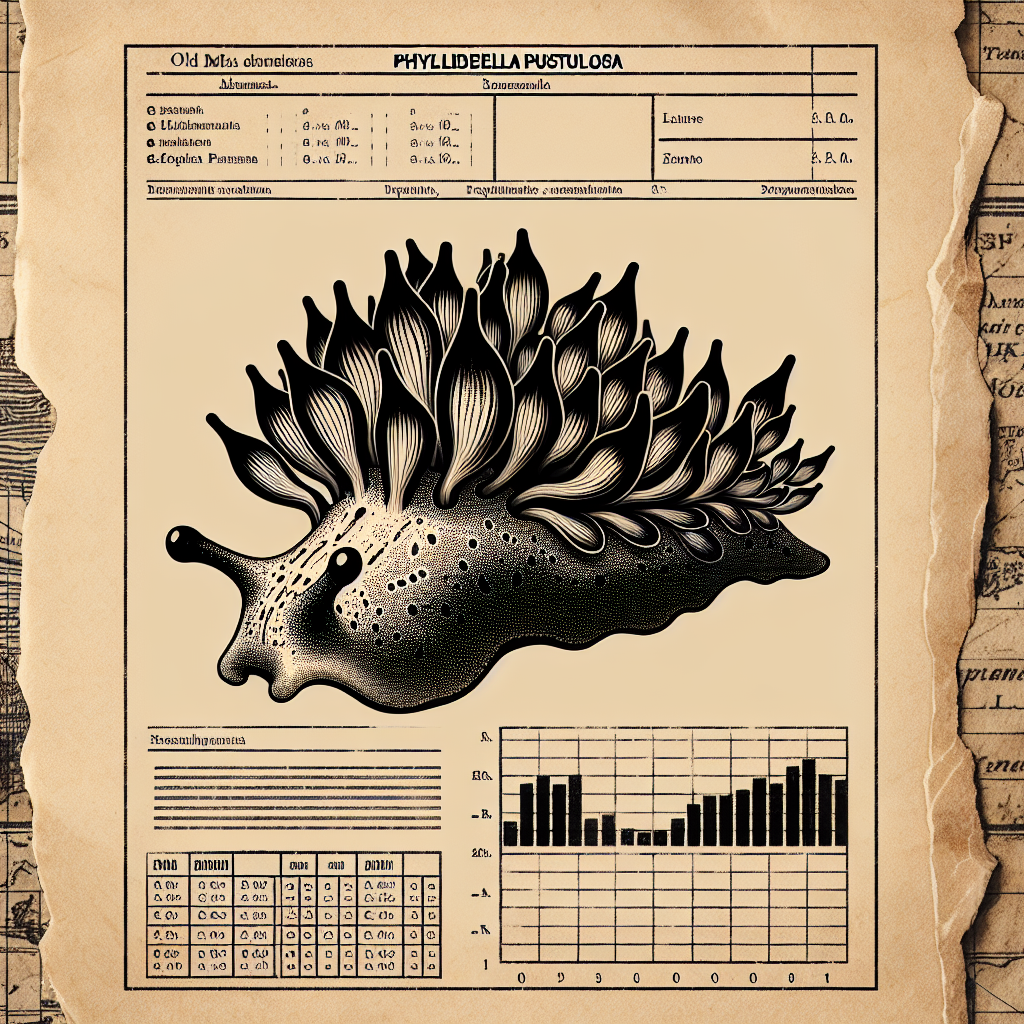Meet Phyllidiella pustulosa: The Ribbon of the Reef
Imagine gliding through a vibrant coral reef, a splash of colors dancing before your eyes, and amidst this underwater spectacle, a peculiar creature catches your attention—Phyllidiella pustulosa. This sea slug is not just any marine wanderer; it's a vibrant masterpiece etched into the aquatic tapestry of the Indo-Pacific region. Known for its unique appearance and intriguing behaviors, Phyllidiella pustulosa, or the pustulosa nudibranch, is a fascinating subject for marine enthusiasts and scientists alike.
Discovering Phyllidiella Pustulosa
We start our underwater journey in the thriving coral reefs of the Indo-Pacific, where the Phyllidiella pustulosa calls home. With its widespread distribution, this nudibranch frequents the waters stretching from the Indian Ocean to the western and central Pacific. But why does it capture our attention? The nudibranch is a riot of colors, typically displaying shades of pink, blue, or green with distinctive white tubercles lining its back. Its striking appearance isn't just for show; nature has equipped it with a defense mechanism that wards off predators!
Phyllidiella pustulosa, fascinatingly, does not just exist—it's an integral part of the marine ecosystem. Nudibranchs like Phyllidiella contribute to the reef's health by feeding on sponges, thus keeping the coral habitats from overgrowth and maintaining ecological balance. This little creature is a vibrant reminder of the interconnectedness of life under the ocean waves.
Understanding the Anatomy of Wonder
For all its beauty, the Phyllidiella pustulosa is a creature of simple pleasures and complex biology. Like other nudibranchs, it lacks a protective shell and instead relies on chemical defenses and startling coloration to ward off its predators. The ornate tubercles on its back are not merely decorative; they are part of its sophisticated defense strategy.
Beneath its colorful cloak, this nudibranch boasts a mouth adapted for a specialized diet. Thanks to a unique feeding organ called a 'radula,' it grazes on certain types of sponges found abundantly in its habitat. What's conservation at work? By feeding in this selective manner, Phyllidiella pustulosa helps control sponge populations, ensuring coral reefs remain vibrant and healthy.
A Peek Into the Life Cycle
Despite its delicate appearance, Phyllidiella pustulosa has a robust life cycle that promises the continuation of its species. Nudibranchs begin life as free-swimming larvae, drifting with ocean currents before finding a suitable reef to settle. Once grounded, they grow into the colorful adults we recognize.
This settlement is critical, for a nudibranch’s life is tethered to a very particular set of environmental conditions. Temperature, water quality, and available food sources must align perfectly. Understanding this life cycle deepens our appreciation of the fragile balance that sustains marine ecosystems.
Scientific Importance and Conservation
The Phyllidiella pustulosa doesn't just captivate our eyes; it’s a beacon for scientific study. Researchers continue to examine its chemical defenses, exploring potential applications for human medicine. The nudibranch's vibrant colors and defenses are intricately tied to its diet and habitat, making it an important indicator species for monitoring reef health.
Sadly, many reef ecosystems face threats from pollution, climate change, and human activity. Protecting Phyllidiella pustulosa and its cousins is essential, not merely to preserve their place in nature but to sustain the broader ecosystem that depends on their presence. By learning from creatures like Phyllidiella, we unlock knowledge that can lead to breakthroughs in biotechnology and environmental management.
What Phyllidiella Pustulosa Teaches Us
The story of Phyllidiella pustulosa is one of resilience and adaptation, providing important lessons for humanity. As we face global environmental challenges, this vibrant nudibranch reminds us of the interdependence between organisms and their habitats. Its survival is a testament to the power of diversity and the need for sustainable conservation efforts.
Exploring the world of the unseen, from the quiet gliding of a sea slug to the rollicking dance of ocean currents, enriches our understanding of the environment. Today, as we continue to unveil secrets hidden within the ocean depths, may we be inspired by nature’s magnificence and driven to protect it for future generations.

